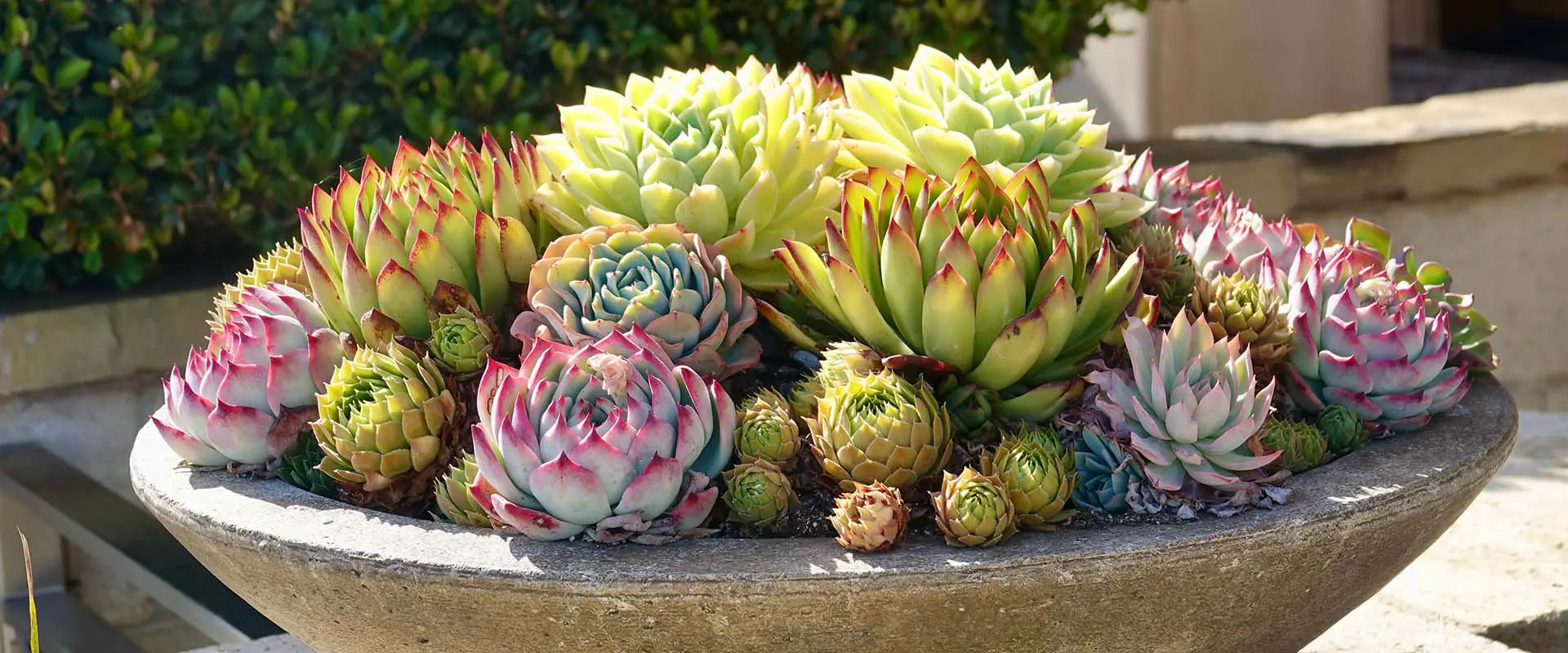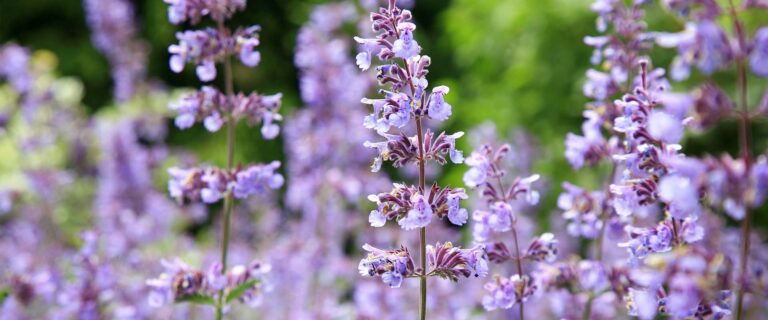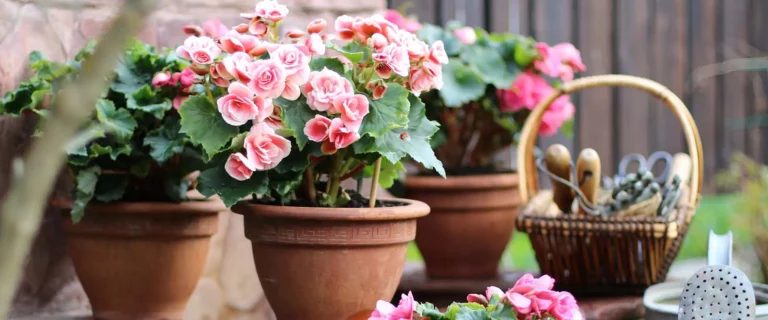If you’ve ever bought or sold a house, or watched HGTV for more than ten minutes, you know that in the real estate world, it’s all about location, location, location. Well, in the retail plant-selling world (like, say, garden centers), the mantra is color, color, color. Frankly, color sells, and that’s what it’s about at any garden center. However…
In the springtime, when garden centers are exploding with color, a lot of plants that are really great get overlooked because they’re not showing off as much as everybody else. That’s according to Sean, our horticulture guru here at The Gardener’s Center. Hardy succulents are a good example of this and, as Sean says, they are “fantastic”…
Sempervivums (Hens and Chicks or Houseleeks)
The botanical name of these hardy succulents is Sempervivum sempervirens (whether you call them “Hens and Chicks” or “Ducks and Geese” or something else), and it tells you something about them.
A little Latin here… “Sempervivum” means “always alive” or “always living.” And the second part of their name is “sempervirens” or “always green.” Don’t they sound amazing already?
This succulent has been around for thousands of years and is very popular in Europe. In fact, if you’ve visited Ireland or Scotland or England or Wales, you may have seen them growing on the mud roof of an old house or two. It’s actually where the name “Houseleek” came from.
Interesting tidbit: “Leek” is an ancient word for “plant.”
People planted Sempervivums on their roofs as living shingles and to protect their homes from fire. The plants also held the mud together and helped shed water off the roofs.
Side note: These plants are not natives and they’re not even European. They originated from western Asia and north Africa. They’re not tropical, but super hardy.
Sean loves these for your garden. As succulents, they don’t need a lot of water. In fact, they don’t need any care whatsoever actually. They are extremely hardy, extremely long-lived and low maintenance.
Sempervivum sempervirens also don’t die back in the winter like other perennials; they have a presence year-round. What you’ll see is that in the fall, they suck most of the liquid out of their leaves and into their roots for the winter, leaving leather-like leaves. And then in the spring when it gets warmer, they essentially reconstitute, plumping back up again.
They have lots of color variations from their foliage and rosettes, and while they do flower, it’s not the flowers that make them attractive. Sean actually cuts the flowers off as soon as he sees them on his plants; he says this is a plant for texture and form, and not for flowers.
Groundcover Sedums (Stonecrop)
Very similar to the Sempervivums, Sedums are succulents, and also super hardy. What else do they share? The Sedums don’t die back and disappear over the winter; while they will shrivel up a bit, they will maintain a presence.
Looking for window box or container contenders? This succulent is another good choice. Plus, in the flower department, they’re a bit showier than the Sempervivums, but they still won’t take your breath away. (Sean’s words!) You’ll want them for their texture and foliage color.
Another reason you’ll love them? They are a fantastic groundcover for sunny, dry areas. Whether it’s a rock garden or a patch around your mailbox that you can’t get to easily with your hose, Sedums are a premium choice. They really don’t need to be watered beyond what they get from summer rain.
Plus, you don’t even have to cut them back in the fall because of the way they store water over the winter.









